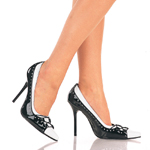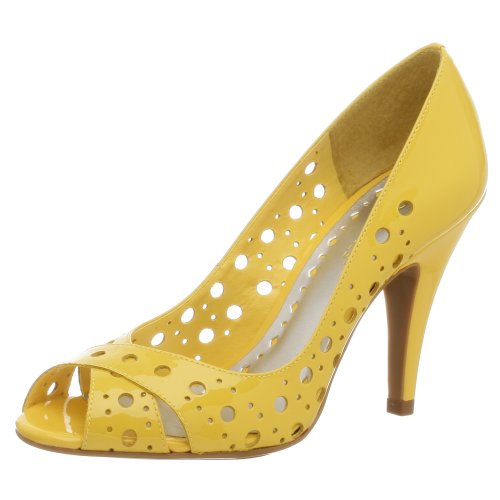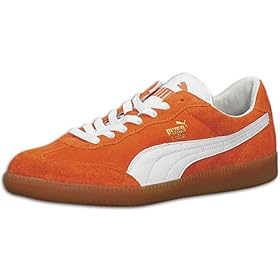
An Outfit is complete only when it has all the complementing accessories worn or carried along with it.
Footwear is one of the most important fashion accessories that can make or mar the looks of your 'so cautiously chosen' apparel. So, its always better to be careful while selecting shoes that go with your wardrobe. Equally important is to know the trends prevalent in existing fashion circle so that you may always look hot and happening! It's time now to know the latest trends that'll make the heads move in Spring- Summer 2009!!
Heals Stilettos
Stilettos: They are back with a bang! Stilettos are everywhere- on ramps and on roads. However, it has been mixed up with platforms to give an innovative style- a hidden platform at the front and a real high stiletto at the back. The higher the stilettos, the more they attract. If you prefer fashion over comfort, stilettos

are for you. If not, then think twice before falling for them.
Tapered Heels: They are thick at the top and slim down as they reach the ground, often with a curve, into a stiletto-esque point at the bottom. If you can't wear stilettos, try tapered heels to be some

what comfortable.
Platform and Wedge Heels: In spite of stilettos returning, platforms and wedge heels will remain. Thick heels are always more friendlier to feet and they can't be let out of fashion so easily.
 Ballet Flats
Ballet Flats: Talking about heels, we can't forget shoes without them. Like platforms, ballet flats will also stay around. However, they'll come in new colors and luxe fabrics like satin.
Toe Shapes Squared-off toes
Squared-off toes: They will return but with a difference. Rather than a fully squared toe, the new squared-off shape will be tapered in toe with a short blunt nose.
 Pointed Toes:
Pointed Toes: The razor-sharp pointed toe footwear is all set to make a comeback. When stilettos come, how can pointed toes remain behind? Those who don't get along with them, can definitely find 'always available round toes' or the squared off ones.
Colors and PrintsBright Colors: Bright hues of red, orange, yellow and purple will

make way into the shoe racks. If you are afraid that you can't pull off the oranges or purples, you'll find them paired with skin friendly colors like blue and white. Pinks will also be there ranging from baby pinks to even fuchsia.
Two- Tone or Multicolor: Contrasting colors will there be on different

parts of your shoes like contrasting straps or heels. From bright colors to the classic greys and blacks, all will be used to bring style statement through shoes. Multi-colored shoe is not only for wearing with a plain colored outfit, they can well go with anything.
 Floral Patterns
Floral Patterns: The evergreen flowers will be there either as prints, appliqués or embellishments. You will find them in subtle as well as extreme patterns.
Styles and Other Details Gladiator Sandals
Gladiator Sandals: Footwear representing
Greco-Roman fashion, heavily strapped and heeled versions and in bright colors will be the choice of the season.
 Mary-Jane Style
Mary-Jane Style: The style was also popular last year but this year, it has changed its looks. They'll be now seen with double or even triple buckles, bright colors, luxurious fabrics or sharply pointed toes.
 Open Toes and Cut-Out Shoes
Open Toes and Cut-Out Shoes: Open-toes or peep-toes are pretty fashionable this season. If not open toes then cut-out heels or cut-away sides will be there to give relief to your summer stricken feet.
 Heavy Accessory Shoes
Heavy Accessory Shoes: Shoes are going to be heavy with the accessories like zippers, snaps and buckles. There might be one or multiple of such accessories on them. They'll nicely decorate our footwear whether it be sandals or pump shoes.


































 Texas, and the newsboy or messenger caps. The most popular hats and caps with women are straw hats, felt and velvet hats, cotton knitted hats, and as winter accessory they like to don wool bucket hat or wool beret. Woolen hats are also there for men and that too stylish ones, of which embroidered hats and caps are most liked by men. Women love it when their hats are embellished with fur, bows, satin ribbons and the like, so that they may look stunning in formal dresses too. There are some unisex caps too, like baseball caps, that are worn by both, men and women. Apart from hats and caps, masks have also become very popular these days. These face masks are worn over a part of the face or all over face, mainly to disguise the wearer but sometimes also to protect the face. Their popularity is due to pleasure factor when it is required to disguise the wearer, say at fancy dress parties, masked balls and during Halloween parties. The ones which are worn for protection are popular with sports persons like ice hockey goalkeepers and yes with sporty persons too who enjoy throwing snowballs on each other!
Texas, and the newsboy or messenger caps. The most popular hats and caps with women are straw hats, felt and velvet hats, cotton knitted hats, and as winter accessory they like to don wool bucket hat or wool beret. Woolen hats are also there for men and that too stylish ones, of which embroidered hats and caps are most liked by men. Women love it when their hats are embellished with fur, bows, satin ribbons and the like, so that they may look stunning in formal dresses too. There are some unisex caps too, like baseball caps, that are worn by both, men and women. Apart from hats and caps, masks have also become very popular these days. These face masks are worn over a part of the face or all over face, mainly to disguise the wearer but sometimes also to protect the face. Their popularity is due to pleasure factor when it is required to disguise the wearer, say at fancy dress parties, masked balls and during Halloween parties. The ones which are worn for protection are popular with sports persons like ice hockey goalkeepers and yes with sporty persons too who enjoy throwing snowballs on each other! 













